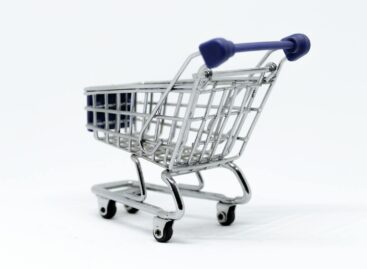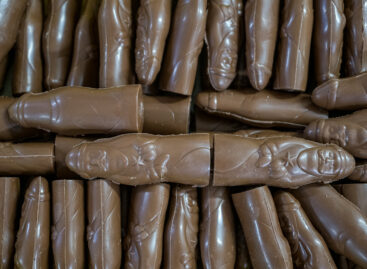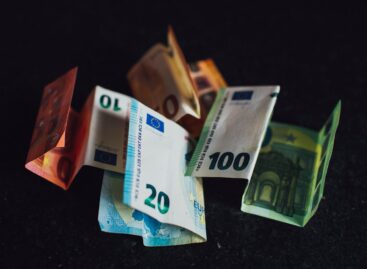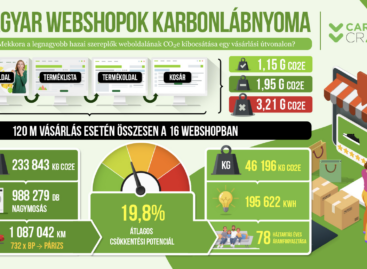Export champion with innovation in the sugar market curve – Budapest industry roundtable on the competitiveness of confectionery manufacturers
Successful candy manufacturers are responding to the changes in the sugar market by developing export-winning, innovative products, as was crystallised at the Budapest roundtable discussion, to which the Hungarian Confectionery Manufacturers’ Association and the European Sugar Consumers’ Association invited representatives of the press in early October. The professional organizations of producers and processors are also proposing new measures to lawmakers that would increase the competitiveness of our region.
 Domestic confectionery manufacturers are experiencing both hot and cold weather due to changes in prices, consumer demand and the regulatory environment – said Sándor Sánta, the President of the Hungarian Confectionery Manufacturers Association in his opening speech. For example, the size of the market in the first eight months of this year approached 450 billion forints, but producer revenues were increased by strong inflation, as the market decreased based on the quantity delivered – while the sales volume in food and food-related retail increased by 2.7 percent in the same period.
Domestic confectionery manufacturers are experiencing both hot and cold weather due to changes in prices, consumer demand and the regulatory environment – said Sándor Sánta, the President of the Hungarian Confectionery Manufacturers Association in his opening speech. For example, the size of the market in the first eight months of this year approached 450 billion forints, but producer revenues were increased by strong inflation, as the market decreased based on the quantity delivered – while the sales volume in food and food-related retail increased by 2.7 percent in the same period.
The price of cocoa, which was at record highs last year, has now decreased, but is still double what it was two years ago. Moreover, confectionery manufacturers will only be able to enjoy the favorable turn next year, because they have already manufactured their products for this year’s holiday season.
The European Commission is postponing the entry into force of the EUDR (EU Deforestation Regulation) for the marketing of deforestation-free products – including cocoa, coffee, soy, oil palm – within the EU for another year, the European Commission announced in the hours before the press roundtable. Market players will therefore have to prepare to meet the compliance requirements by the end of 2026, and this will also help confectionery manufacturers reduce their costs this year.
However, paying the ERP fees, which have been further increased since October this year, places an additional burden on market players. In accordance with the EU environmental directive on Extended Producer Responsibility, the EPR system has been in operation in Hungary since July 2023, in which manufacturers finance the waste management of certain circular products, including packaging and advertising paper. The fee increase is difficult to interpret in a system that is already the most expensive in Europe, Sándor Sánta pointed out. With increasing revenues from more extensive recycling, ERP fees should rather decrease.
Sugar price fluctuations and security of supply
The European Sugar Users’ Association (CIUS) represents more than 15,000 food and beverage companies that purchase the majority of sugar produced in the EU for the production of their high-value products, such as sweets, fruit jams, chocolates and soft drinks. The organization’s member companies provide more than 400,000 jobs and contribute significantly to the EU’s agri-food performance and export surplus.
With an annual production of 15-20 million tonnes of beet sugar, the European Union is the world leader, said Mayssa Vandevyvre, Director General of CIUS, in her presentation. Our suppliers produce at competitive prices that rival those of Brazilian cane sugar, but the market is burdened by structural problems. For example, sugar production is concentrated in the European beet belt – northern France, the Benelux countries, Germany, Poland and the United Kingdom – while refineries are largely located in regions with low beet production, including Portugal, South-Eastern Europe and southern Italy.
The European sugar market is also highly consolidated, with French and German companies supplying half of the production, and the 7 largest producers accounting for more than four-fifths, or 81 percent, of the EU market. This limits competition and increases transport costs. The EU sugar market price often fluctuates, varying from, sometimes above and sometimes below, both the EU reference price and the world market price. In addition to production and exports, the EU also imports sugar from several countries around the world. Nearly a third of the sugar imported between October last year and September this year came from Ukraine and the United Kingdom, and a quarter from Mauritius and Colombia.
Related news
The Hungarian Confederation of Economic Workers also spoke out regarding the inflation data
🎧 Hallgasd a cikket: Lejátszás Szünet Folytatás Leállítás Nyelv: Auto…
Read more >Timeless flavours, new expectations
🎧 Hallgasd a cikket: Lejátszás Szünet Folytatás Leállítás Nyelv: Auto…
Read more >Tradition and innovation characterize this year’s Christmas candy market
🎧 Hallgasd a cikket: Lejátszás Szünet Folytatás Leállítás Nyelv: Auto…
Read more >Related news
Investment dumping is coming in the food industry
🎧 Hallgasd a cikket: Lejátszás Szünet Folytatás Leállítás Nyelv: Auto…
Read more >It turns out which online food ordering platform websites are the most sustainable
🎧 Hallgasd a cikket: Lejátszás Szünet Folytatás Leállítás Nyelv: Auto…
Read more >Customers are also looking for the record-breaking iPhones in refurbished versions
🎧 Hallgasd a cikket: Lejátszás Szünet Folytatás Leállítás Nyelv: Auto…
Read more >






